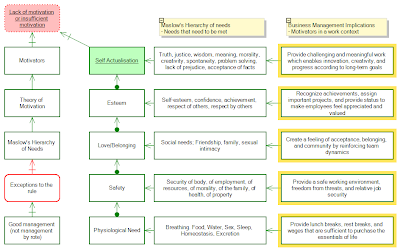
This Southbeach model illustrates the benefits of pro-active, holistic problem solving over the more reactive approach of working blind and responding to issues by just treating symptoms. Southbeach models naturally support the ideas of root cause analysis and impact analysis through their cause and effect notation, useful things being shown in green and harmful things being shown in red.
In this example, the harmful causal chains in the centre start with "working blind" which leads to missing the big picture and creating more work for others, as well as treating symptoms and creating more work for one's self. Both of these behaviours naturally result in making things worse.
These harmful behaviours are in opposition to the surrounding useful behaviours:
On the left we have understanding whos involved to understand others' views and create shared awareness to produce support for change; resulting in making things better. This aspect of problem solving involves stepping back from the problem and understanding the context and effects of a problem to enable more effective, complete, and widely acceptable solutions.
On the right, we have understanding the root cause to deal with the real issues, remove the actual problem, and create lasting change; resulting in making things better. This aspect of the problem solving involves stepping into the problem and understanding the source and reasons the problem came about to enable more effective, sustainable, solutions that avoid problems coming back again in different forms later on.
These two behaviours are in opposition to each other, as are their consequences - making things worse often results from short term thinking and superficial attempts at improvement. Making things better may take more effort and require more commitment, however, results in a more sustainable solution with longer term benefits.
Not that the above Southbeach model shows the useful behaviours around the outside counteracting the harmful behaviours in the middle. Over time, a shift in behaviour to the outside can dissolve the harmful behaviour and improve performance and achievement.
If this approach is not adopted however, and an organisation, society, culture, or other group continues to contain elements that behave in this harmful way, the good work done by those who are investing the extra effort to address the real issues will be undermined by those that are merely taking superficial action without considering the bigger picture.
This results in opposing behaviours that create a continuing spiral of issues, as shown below. The difference with this model is that the useful bahaviours on the outside are not actually counteracting the harmful behaviours in the centre. They are shown here merely as in opposition - i.e. this system is not improving because the harmful behaviours represent a force for negative change that is holding improvement at bay.



















